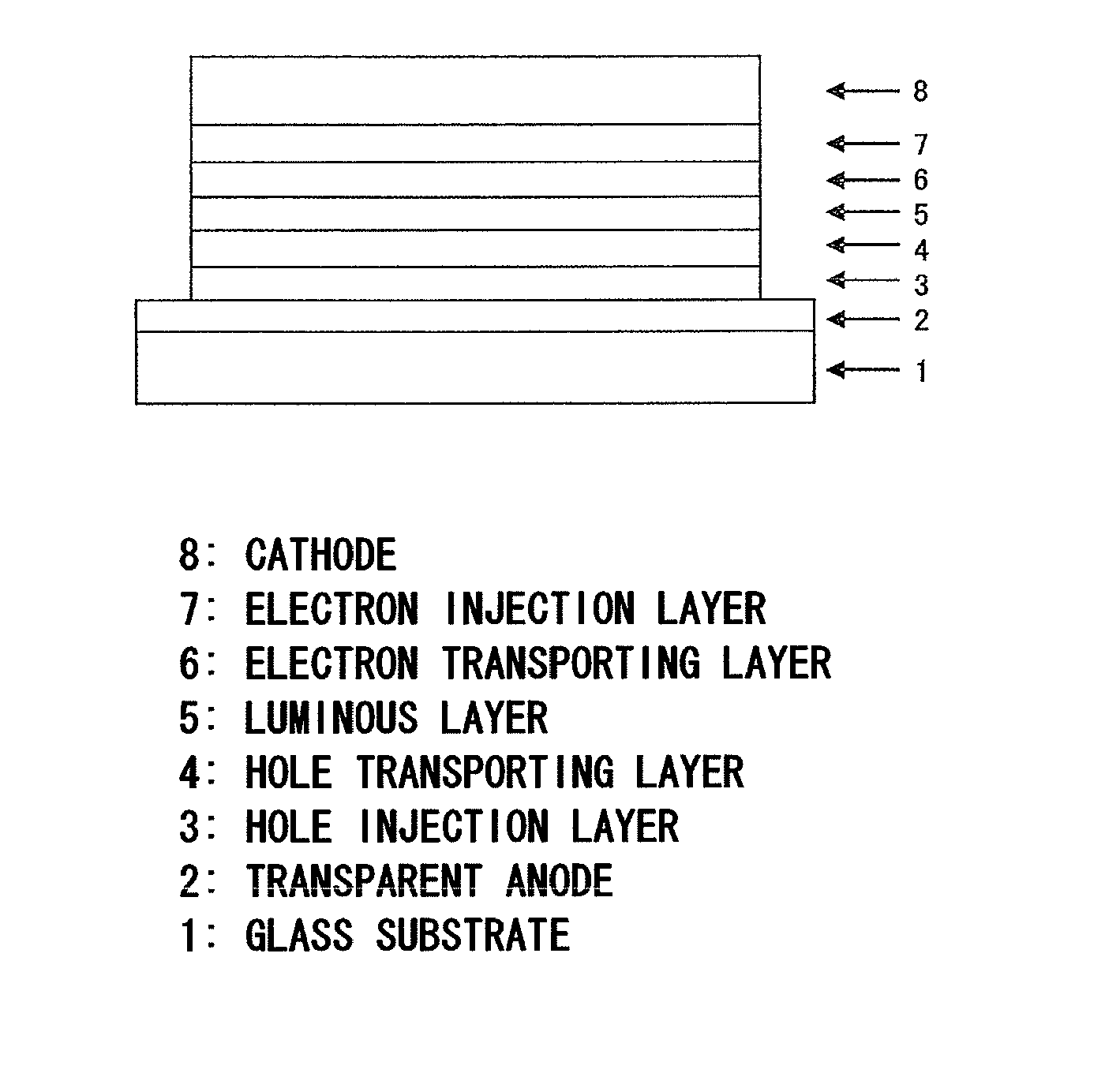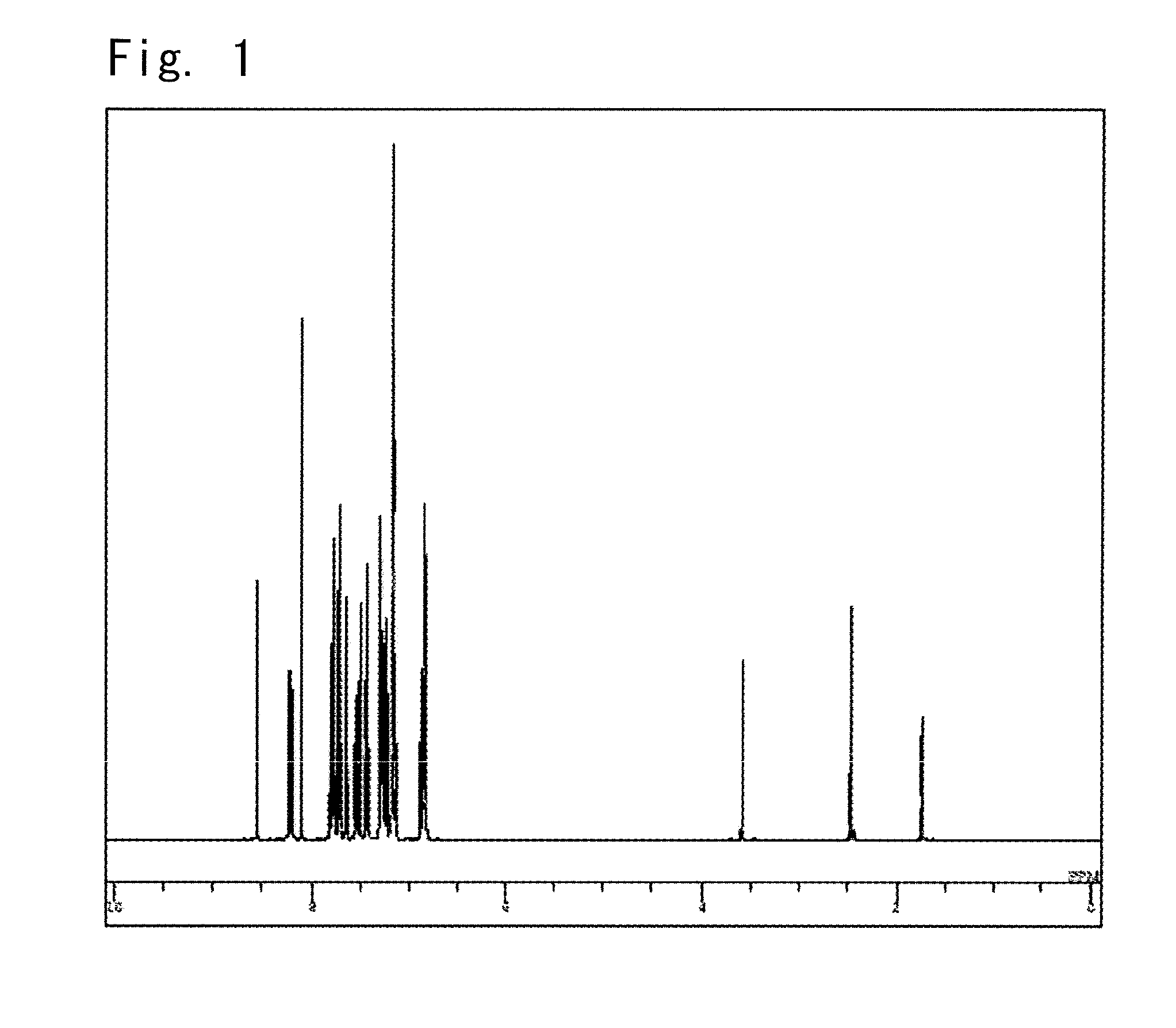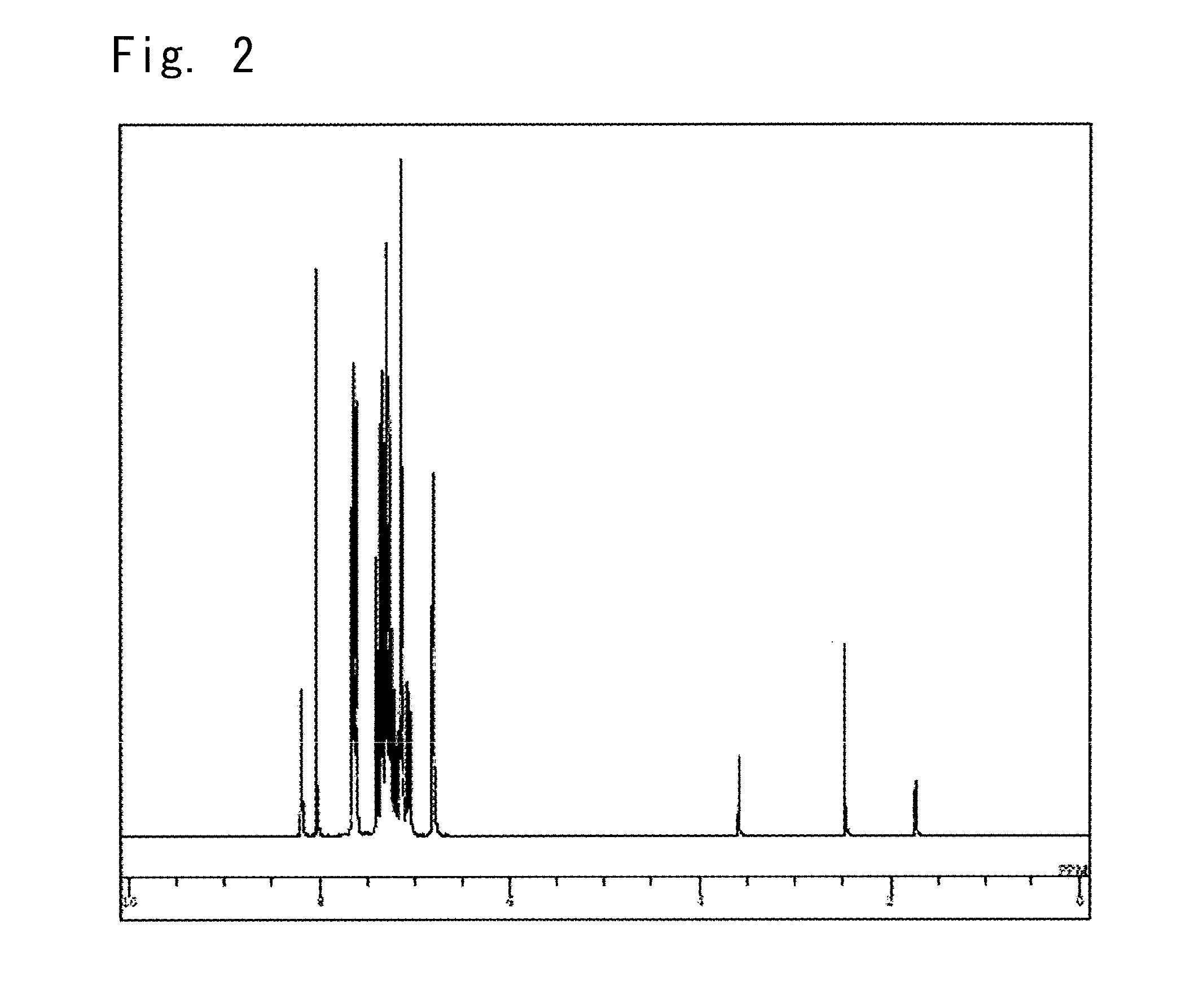Compound having an indolocarbazole ring structure and organic electroluminescent device
a technology of indolocarbazole and ring structure, which is applied in the direction of thermoelectric devices, organic chemistry, anthracene dyes, etc., can solve the problems of material thermal decomposition, and deterioration of device properties, and achieve excellent electron blocking power, favorable amorphousness, and excellent electron blocking power
- Summary
- Abstract
- Description
- Claims
- Application Information
AI Technical Summary
Benefits of technology
Problems solved by technology
Method used
Image
Examples
example 1
Synthesis of a 5-(9-phenyl-9H-carbazole-3-il)-11,12-diphenylindolo[2,3-a]carbazole (compound 4)
[0137]Into a reactor purged with nitrogen, there were added:
11,12-Dihydroindolo[2,3-a] carbazole,15.0gIodobenzene,19.6mlCopper powder,0.37g3,5-Di(tert-butyl)salicylic acid,1.47gPotassium carbonate,12.13gDodecylbenzene,25ml
which were then heated at 200° C. and stirred for 7 hours. After cooled down to 100° C., 400 ml of toluene was added thereto to dissolve them, and the insoluble matter was removed by filtration.
[0138]After condensed under reduced pressure, the condensate was crystallized with 500 ml of methanol to obtain 22.6 g of a white powder of 11,12-diphenylindolo[2,3-a]carbazole (yield, 94.5%).
[0139]Next, into the reactor, there were added:
White powder of the carbazole obtained above,22.6gDMF:300mlImide N-bromosuccinate,9.36g
which were stirred at room temperature for 8 hours and were, thereafter, left to stand overnight.
[0140]Next, the reaction solution was added to 1000 ml of water...
example 2
Synthesis of a 5-[{biphenyl-4-il)phenylamino}phenyl-4-il]-11,12-diphenylindolo[2,3-a]carbazole (compound 12)
[0146]Into the reactor purged with nitrogen, there were added:
5-Bromo-11,12-diphenylindolo[2,3-a]3.40gcarbazole synthesized in Example 1,(Biphenyl-4-il)-{4-(4,4,5,5-tetramethyl-3.12g1,3,2-dioxaborane-2-il) phenyl}-phenylamine,Mixed solvent of toluene / ethanol (4 / 1, v / v),30ml[0147]2M potassium carbonate aqueous solution, 10.5 ml, and the ventilation was conducted with the nitrogen gas for 30 minutes while being irradiated with ultrasonic waves.
Next, 0.24 g of the tetrakis(triphenylphosphine) palladium (0) was added thereto and was heated, refluxed and stirred for 13 hours. After cooled down to room temperature, 50 ml of toluene and 50 ml of water were added thereto, followed by the separating operation to collect the organic layer. Further, the aqueous layer was extracted with 30 ml of toluene to collect the organic layer. After the organic layers were added up together, water w...
example 3
Synthesis of a 5-[{bis(phenyl-4-il)amino}phenyl-4-il]-11,12-diphenylindolo[2,3-a]carbazole (compound 13)
[0151]Into the reactor purged with nitrogen, there were added:
5-Bromo-11,12-diphenylindolo[2,3-a]3.40gcarbazole synthesized in Example 1,Bis(biphenyl-4-il)-{4-(4,4,5,5-tetramethyl-3.22g1,3,2-dioxaborane-2-il)phenyl} amine,Mixed solvent of toluene / ethanol (4 / 1, v / v),30ml2M potassium carbonate aqueous solution,9.2ml,
and the ventilation was conducted with the nitrogen gas for 30 minutes while being irradiated with ultrasonic waves. Further, 0.43 g of the tetrakis(triphenylphosphine) palladium (0) was added thereto and was heated, refluxed and stirred for 8 hours. After cooled down to room temperature, 50 ml of toluene and 50 ml of water were added thereto, followed by the separating operation to collect the organic layer. The organic layer was dehydrated with the anhydrous magnesium sulfate, and a crude product was obtained by the condensation under reduced pressure.
[0152]The crude p...
PUM
| Property | Measurement | Unit |
|---|---|---|
| voltage | aaaaa | aaaaa |
| brightness | aaaaa | aaaaa |
| heat resistance | aaaaa | aaaaa |
Abstract
Description
Claims
Application Information
 Login to View More
Login to View More - R&D
- Intellectual Property
- Life Sciences
- Materials
- Tech Scout
- Unparalleled Data Quality
- Higher Quality Content
- 60% Fewer Hallucinations
Browse by: Latest US Patents, China's latest patents, Technical Efficacy Thesaurus, Application Domain, Technology Topic, Popular Technical Reports.
© 2025 PatSnap. All rights reserved.Legal|Privacy policy|Modern Slavery Act Transparency Statement|Sitemap|About US| Contact US: help@patsnap.com



